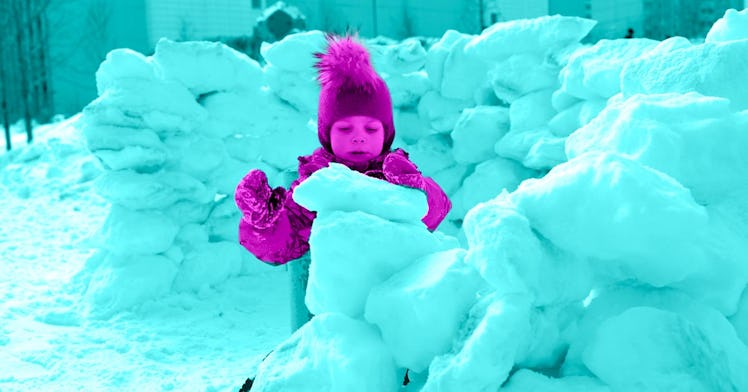How to Build a Fight-Ready Snow Fort Worthy of the Marine Corps
Because 20,000 Arctic-trained marines probably aren't wrong

John Gookin, the Curriculum and Research manager at the National Outdoor Leadership School, not only knows how to craft an elaborate snow shelter in the wild (he wrote the NOLS Guide to Winter Camping), he knows how to weaponize one. Over the years, Gookin has schooled over 20,000 members of the U.S. Marine Corps in the arts of arctic warfare, so, as you can imagine, the man knows a thing or two about building a snow fort. In fact, he may be the world’s leading expert on building snow forts for snowball fights and for generally bunkerizing a backyard. Here are his four tips on building a snow structure that won’t crumble under the pressure of an assault or melt under the heat of a the sun.
1. Your snow fort doesn’t have to be made of just snow.
There are clear advantages to using natural barriers like trees, piles of dirt, and mounds of already piled-up snow, says Gookin. “Using what’s already around you makes your fort look less obvious.” Plus the more you rely on existing structures, the less snow you have to pack and build up. There are snow fort purists out there, but not in the military and not in backcountry.
2. When crafting your walls, think about concealment and cover.
One of Gookin’s top lessons for marines is to seek concealment and cover. “Concealment is making sure the bad guy can’t see you. In a snowball fight, this is about building walls that you want to be about breast-high, so that you can hide and then quickly pop up to throw a snowball when you need to. Cover means that even if the bad guys can see you, their weapons can’t get you. So this means building walls, if you’re right handed, say, where there are cutouts so you can throw but your head and torso are still protected.”
3. Fortify your base.
“When building your walls, start wide and build up for more stability. If the snow is soft and crumbly, you want to use a spray bottle to get it a little bit wet. This forces a process called sintering, where the snow crystals freeze together. You don’t want to spray your fortress with a hose, though. It’ll just melt,” says Gookin. To further strengthen your fort’s walls, consider adding “rebar,” like sticks you find lying around. “Just don’t use mom’s broom, because she might not see it for months.”
4. Don’t forget about your fortress’s rear flank.
“Ideally you want to be able to sneak in and out of the fort without being noticed. This is called an egress route, which is another reason you might want to build your fortress next to an existing structure, like the garage, rather than making a freestanding one,” says Gookin.
The Fatherly Guide to Snow Ball Fights
- The Army Strategist’s Guide to Backyard Snowball Warfare
- How to Make a Perfect Snowball According to Physics
- Gear Guide: Everything You Need to Dominate a Snowball Fight